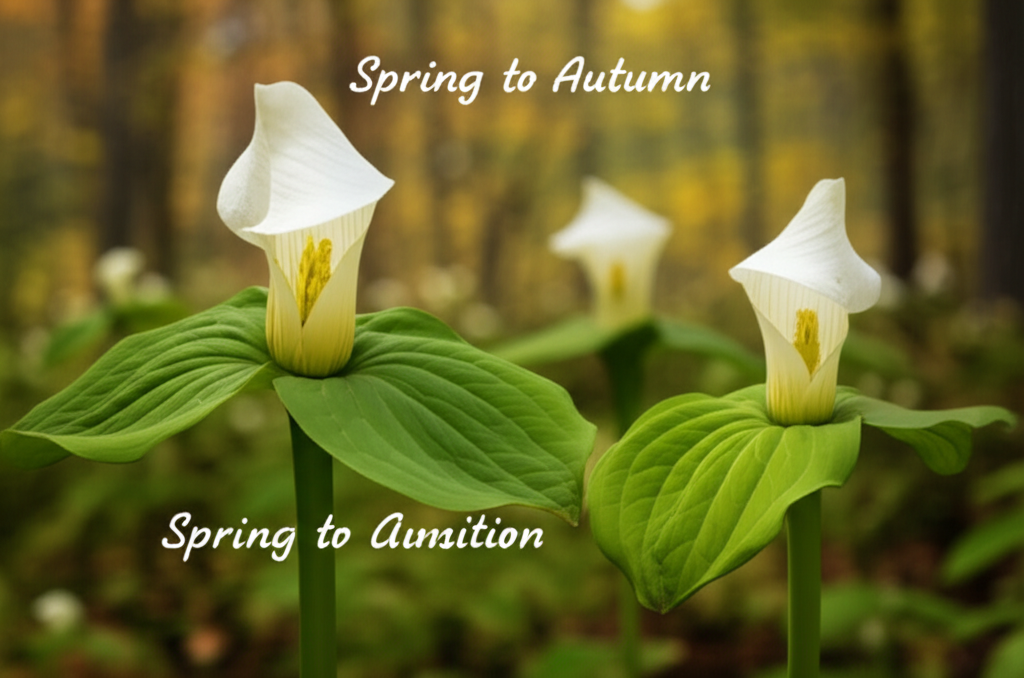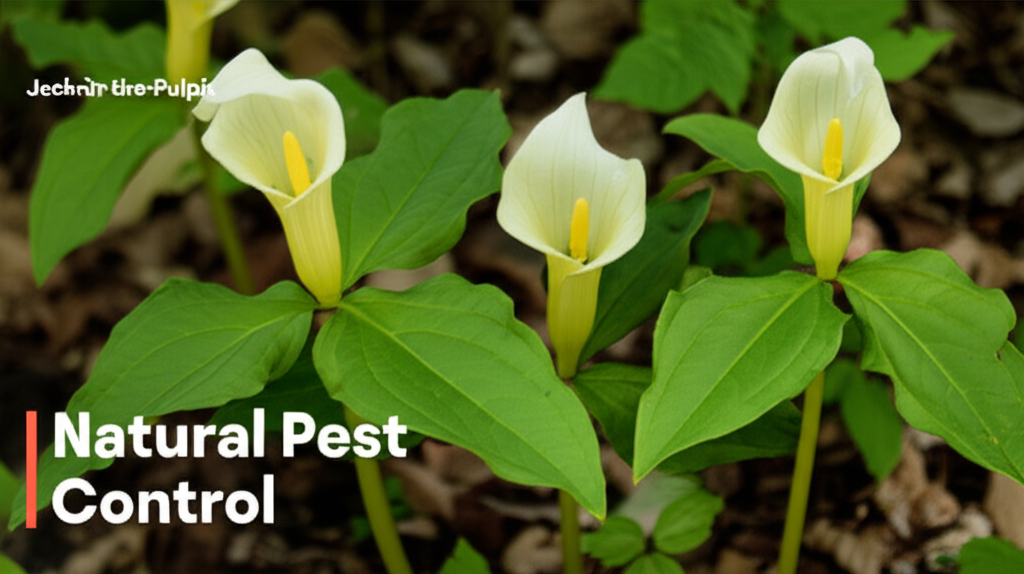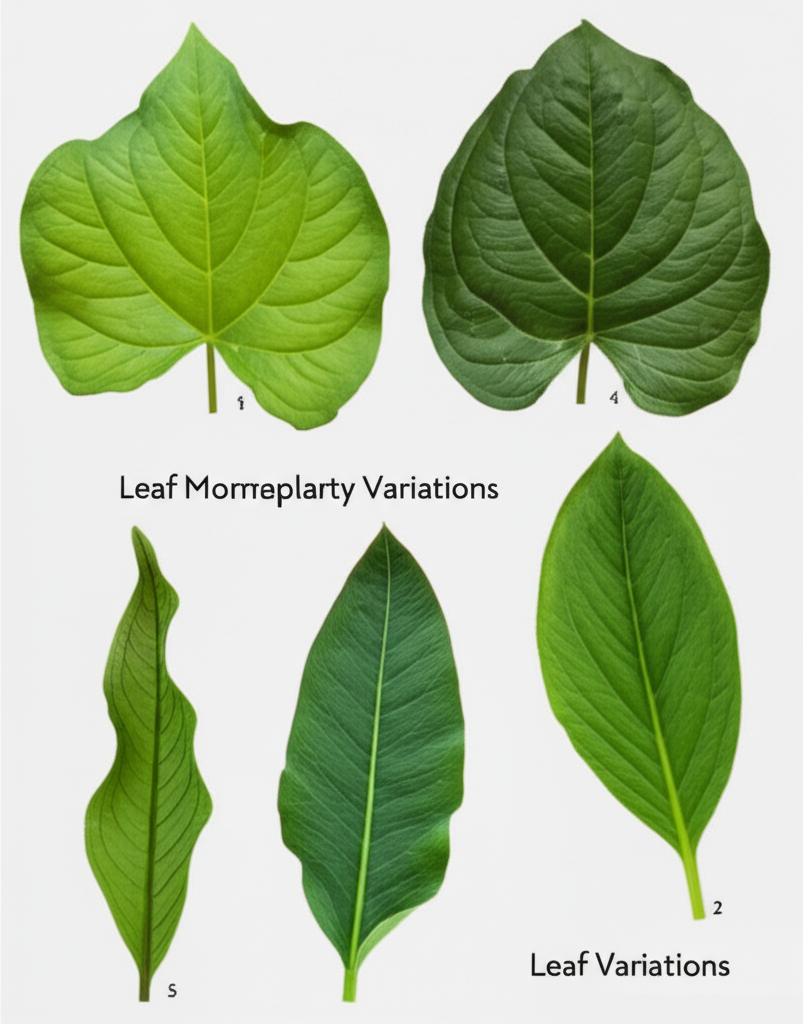Introduction to Foxglove Beardtongue (Penstemon digitalis)
Foxglove Beardtongue, scientifically known as Penstemon digitalis, is a beloved native North American wildflower celebrated for its tall, elegant spires of bell-shaped flowers. Typically blooming in late spring to early summer, these blossoms, usually white to pale pink with delicate purple veining, attract a host of pollinators, including bees, butterflies, and hummingbirds. While often found gracing meadows and open woodlands in its natural habitat, Foxglove Beardtongue has gained significant popularity among gardeners for its adaptability, making it an excellent candidate for container gardening.
Container gardening offers a unique opportunity to control a plant’s environment, and temperature is a crucial factor for the success of Penstemon digitalis. This article will delve into the specifics of managing temperature for foxglove beardtongue grown in containers, ensuring robust growth and abundant blooms. We will explore optimal temperature ranges, the impact of extreme temperatures, and practical strategies for temperature regulation throughout the plant’s life cycle, from germination to flowering and overwintering.
Understanding Foxglove Beardtongue’s Temperature Preferences
Penstemon digitalis is a hardy perennial, generally classified as a USDA Plant Hardiness Zone 3 to 8. This broad range indicates its inherent resilience to a variety of climates. However, when cultivated in containers, its exposure to temperature fluctuations can be more pronounced than when planted directly in the ground, where the surrounding soil mass offers some insulation.
Optimal Growth Temperatures
Foxglove Beardtongue thrives in moderate temperatures. During its active growing season, which typically spans from spring through early summer, the ideal daytime temperature range is between 65°F and 75°F (18°C to 24°C). Nighttime temperatures within this range are also beneficial, though the plant can tolerate slightly cooler nights, down to around 50°F (10°C).
These moderate temperatures promote healthy foliage development and prepare the plant for its spectacular flowering display. Consistent warmth without excessive heat is key to encouraging strong stem elongation and bud formation.
Germination Temperatures
If you are starting foxglove beardtongue from seed, temperature plays a critical role in germination success. Seeds typically require a period of stratification, mimicking winter conditions, followed by moderate temperatures for germination.
- Stratification: Cold, moist stratification for 30-60 days at temperatures between 35°F and 40°F (2°C to 4°C) is often recommended for Penstemon digitalis seeds.
- Germination: After stratification, seeds germinate best in soil temperatures ranging from 65°F to 70°F (18°C to 21°C). Consistent moisture is also essential during this phase.
Flowering Temperatures
The peak flowering period for foxglove beardtongue usually occurs when daytime temperatures are consistently in the 70°F to 80°F (21°C to 27°C) range. While it can tolerate slightly higher temperatures, prolonged exposure to extreme heat (above 85°F or 30°C) can lead to stress, reduced bloom duration, and a more faded flower color. Conversely, unseasonably cold snaps during the bloom period can damage developing flower buds.
Impact of Extreme Temperatures on Container-Grown Foxglove Beardtongue
The enclosed nature of a container means that soil temperatures can rise and fall much more rapidly and dramatically than in the ground. This sensitivity requires careful consideration for container gardeners.
Heat Stress
During hot summer days, the soil in a container can become significantly hotter than the ambient air temperature. This is particularly true for containers placed in direct sunlight, especially those made of dark-colored materials.
- Symptoms of Heat Stress:
Wilting of leaves, even if the soil is moist.
Scorched or brown leaf margins.
Reduced flower production or premature wilting of blooms.
Stunted growth.
Increased susceptibility to pests and diseases.
Cold Stress and Frost Damage
Conversely, during colder periods, containerized plants are more vulnerable to frost and freezing temperatures. The limited soil volume offers little protection to the root system, which is the plant’s most sensitive part to cold.
- Symptoms of Cold Stress/Frost Damage:
Blackening or wilting of foliage and flower stalks.
Root damage, which can lead to the plant failing to establish or recover in the spring.
Complete plant death if temperatures drop significantly below freezing for extended periods.
Temperature Control Strategies for Containerized Foxglove Beardtongue
Effective temperature management involves anticipating and mitigating extreme conditions through various horticultural practices.
Container Selection
The material and color of your container can significantly impact soil temperature.
- Material:
Terracotta/Clay: These porous materials allow for some air circulation, which can help moderate soil temperatures, but they also dry out faster.
Plastic: Lighter colored plastic containers are preferable to dark ones as they absorb less heat. Plastic retains moisture better but can lead to rapid overheating in direct sun.
Ceramic: Similar to terracotta but often glazed, offering more moisture retention and some insulation.
Fabric Pots: These offer excellent aeration and drainage, which can help prevent overheating by allowing roots to breathe.
- Color: Opt for lighter-colored containers (white, light gray, pastels) to reflect sunlight and keep the soil cooler in summer. Dark containers absorb heat, leading to higher soil temperatures.
- Size: A larger container provides a greater volume of soil, which acts as a buffer against rapid temperature fluctuations. It also allows for more robust root development.
Strategic Placement
The location of your containerized foxglove beardtongue is paramount for temperature control.
- Summer Heat:
Place containers in locations that receive morning sun but are shaded during the hottest part of the afternoon (typically between 12 PM and 4 PM).
Underneath larger shrubs or trees can provide natural dappled shade.
Consider grouping containers together; the shade cast by adjacent pots can offer some protection.
- Winter Cold:
Move containers to a sheltered location, such as against a south-facing wall, which can radiate warmth.
Group containers together for mutual protection.
Consider placing them in an unheated garage, shed, or cold frame for overwintering.
Watering Practices
Proper watering is intrinsically linked to temperature management.
- Summer Watering:
Water deeply and thoroughly in the morning. This allows the plant to hydrate before the heat of the day and helps cool the soil.
Avoid watering in the late afternoon or evening, as this can lead to fungal diseases in warm, humid conditions.
Check soil moisture regularly; container soil dries out much faster than garden soil.
- Winter Watering:
Water sparingly during the dormant season, only when the soil is dry to the touch. Overwatering in cold conditions can lead to root rot.
Mulching
Mulching is a highly effective technique for moderating soil temperatures year-round.
- Summer Mulching: Apply a layer of organic mulch (e.g., shredded bark, compost) around the base of the plant, keeping it a few inches away from the stem. This helps retain soil moisture, suppress weeds, and keep the soil cooler by reflecting sunlight.
- Winter Mulching: In late fall, add an extra layer of mulch. This insulates the roots from extreme cold and prevents the freeze-thaw cycles that can heave plants out of their pots.
Shade Cloth and Windbreaks
For intense summer heatwaves, additional measures can be implemented.
- Shade Cloth: Covering containers with shade cloth (e.g., 30-50% shade) during the hottest part of the day can significantly reduce soil and air temperatures around the plants.
- Windbreaks: While foxglove beardtongue generally tolerates some wind, strong, drying winds can exacerbate heat stress. Strategic placement or temporary windbreaks can be beneficial.
Insulating Containers
For overwintering in colder climates, insulating the container is crucial.
- Wrap containers in burlap, bubble wrap, or old blankets.
- Place the wrapped container inside a larger, decorative pot, filling the gap with insulating material like straw or packing peanuts.
- Burying the container in the ground (if possible) offers excellent insulation.
Key Facts for Container-Grown Foxglove Beardtongue Temperature Management
Here’s a summary of essential temperature-related information for successful container gardening:
| Factor | Optimal Range | Impact of Too Low | Impact of Too High | Management Strategy |
| :—————– | :——————————————— | :——————————————————– | :——————————————————– | :——————————————————————————- |
| Active Growth | 65°F – 75°F (18°C – 24°C) | Slow growth, reduced vigor | Wilting, scorching, reduced flowering | Strategic placement, consistent watering, mulching. |
| Germination | 65°F – 70°F (18°C – 21°C) | Delayed or no germination | Can inhibit germination, potential for damping-off | Soil warming mats (if needed), consistent moisture, appropriate stratification. |
| Flowering | 70°F – 80°F (21°C – 27°C) | Delayed flowering, smaller blooms | Shorter bloom duration, faded colors, wilting | Afternoon shade, adequate watering, avoid extreme heat exposure. |
| Root Zone (Winter) | Above freezing (ideally 40°F-50°F / 4°C-10°C) | Root damage, potential death from freezing | Not applicable for dormancy, but prolonged warmth can disrupt | Insulation, sheltered locations, reduced watering. |
Practical Steps and Considerations
Implementing a comprehensive temperature management plan involves understanding the plant’s needs and adapting your gardening practices.
Seasonal Temperature Management Plan
- Spring (Growth Initiation): Monitor soil temperatures. If starting from seed, use a soil thermometer to ensure optimal germination conditions. Once seedlings are established, gradually acclimate them to outdoor temperatures. Protect from late frosts by covering with frost cloth if necessary.
- Summer (Peak Growth & Flowering): Focus on preventing heat stress. Ensure adequate watering, especially during heatwaves. Provide afternoon shade if temperatures consistently exceed 85°F (30°C). Mulch helps retain moisture and cool the roots.
- Fall (Dormancy Preparation): Reduce watering as the plant naturally slows its growth. Allow foliage to die back naturally, as it can provide some protection to the crowns. Prepare containers for overwintering by insulating them.
- Winter (Dormancy): Protect roots from freezing. Ensure containers are in a sheltered location and water only when necessary. Avoid fertilizing during dormancy.
Pros and Cons of Container Gardening for Temperature Control
While containers offer flexibility, they also present challenges regarding temperature management.
| Pros of Container Gardening | Cons of Container Gardening |
| :———————————————————- | :————————————————————— |
| Mobility: Allows repositioning to optimize light and temperature. | Temperature Extremes: Soil heats up and cools down rapidly. |
| Drainage Control: Easier to manage drainage compared to some in-ground situations. | Watering Frequency: Requires more frequent watering, especially in heat. |
| Pest/Disease Management: Easier to isolate and treat. | Root Restriction: Can limit root growth, making plants more sensitive to stress. |
| Aesthetics: Allows for decorative arrangement in patios, balconies, etc. | Winter Protection: Requires specific strategies to protect roots from freezing. |
| Soil Control: Use of custom-blended potting mixes. | Container Material Impact: Color and material affect soil temperature. |
Monitoring Soil and Air Temperature
Regularly checking soil and air temperatures is crucial for proactive management.
- Soil Thermometer: Invest in an inexpensive soil thermometer. Insert it into the soil near the plant’s root zone to get accurate readings.
- Air Thermometer: Place a simple outdoor thermometer near your container plants to monitor ambient air temperatures, particularly during extreme weather events.
Conclusion
Foxglove Beardtongue (Penstemon digitalis) is a rewarding plant for container gardens, offering stunning vertical accents and attracting beneficial pollinators. While its natural hardiness is a significant advantage, successful container cultivation hinges on effectively managing temperature fluctuations. By carefully selecting containers, strategically placing them, implementing appropriate watering and mulching practices, and providing winter protection, gardeners can create an optimal environment for their foxglove beardtongue to thrive. Understanding and responding to the specific temperature needs of this beautiful wildflower throughout its growth cycle will ensure a vibrant display of blooms and a healthy, resilient plant. With a little attention to detail, your containerized foxglove beardtongue will bring natural beauty and ecological benefits to your outdoor living spaces.
html
<h2>Foxglove Beardtongue Container Gardening: Key Facts & Comparison</h2>
<table>
<thead>
<tr>
<th>Feature</th>
<th>Foxglove Beardtongue (<em>Penstemon digitalis</em>)</th>
<th>Typical Container Requirements</th>
</tr>
</thead>
<tbody>
<tr>
<td>Hardiness Zones</td>
<td>3-8</td>
<td>Zone suitability depends on container size and insulation.</td>
</tr>
<tr>
<td>Sunlight</td>
<td>Full sun to partial shade</td>
<td>Full sun preferred for best flowering; partial shade can help moderate temperature.</td>
</tr>
<tr>
<td>Soil pH</td>
<td>Slightly acidic to neutral (5.5-7.0)</td>
<td>Well-draining potting mix, pH can be adjusted.</td>
</tr>
<tr>
<td>Drought Tolerance (established)</td>
<td>Moderate</td>
<td>Lower in containers; requires more consistent watering.</td>
</tr>
<tr>
<td>Winter Hardiness (in containers)</td>
<td>May require winter protection in colder zones (Zone 5 and below)</td>
<td>Larger containers, mulching, or moving to an unheated garage/shed can help.</td>
</tr>
<tr>
<td>Summer Heat Tolerance</td>
<td>Good, but benefits from afternoon shade in very hot climates</td>
<td>Containers heat up faster; afternoon shade is crucial in hot regions.</td>
</tr>
</tbody>
</table>
<h2>Foxglove Beardtongue Container Gardening: Temperature Control Steps, Pros & Cons</h2>
<h3>Steps for Temperature Control</h3>
<table>
<thead>
<tr>
<th>Step</th>
<th>Description</th>
</tr>
</thead>
<tbody>
<tr>
<td>1. Container Selection</td>
<td>Choose lighter-colored pots (reflect heat) or larger containers (buffer temperature fluctuations). Terracotta can dry out quickly in heat.</td>
</tr>
<tr>
<td>2. Potting Mix</td>
<td>Use a high-quality, well-draining potting mix that retains some moisture. Avoid heavy garden soil.</td>
</tr>
<tr>
<td>3. Watering Strategy</td>
<td>Water thoroughly when the top inch of soil feels dry. Check more frequently during hot spells. Overwatering in cooler, wet periods can lead to root rot.</td>
</tr>
<tr>
<td>4. Location</td>
<td>Place in a spot receiving morning sun and afternoon shade in hotter climates. Protect from harsh winds which can dry out soil and plants.</td>
</tr>
<tr>
<td>5. Mulching</td>
<td>Apply a layer of organic mulch (e.g., wood chips, shredded bark) to help retain soil moisture and regulate temperature.</td>
</tr>
<tr>
<td>6. Winter Protection (Cold Climates)</td>
<td>Move containers to an unheated garage or shed, group them together and mulch heavily, or wrap them in burlap and bubble wrap for insulation.</td>
</tr>
</tbody>
</table>
<h3>Pros and Cons of Container Gardening for Foxglove Beardtongue</h3>
<table>
<thead>
<tr>
<th>Category</th>
<th>Pros</th>
<th>Cons</th>
</tr>
</thead>
<tbody>
<tr>
<td>Temperature Control</td>
<td><strong>Pro:</strong> Easier to move plants to optimal sun/shade or protected locations as needed. Can control soil temperature by choice of container.</td>
<td><strong>Con:</strong> Containers are more susceptible to rapid temperature fluctuations (both heat and cold) compared to in-ground planting. Roots are exposed to extreme temperatures.</td>
</tr>
<tr>
<td>Watering</td>
<td><strong>Pro:</strong> Precise control over watering, especially beneficial for plants that dislike overly wet conditions.</td>
<td><strong>Con:</strong> Dries out much faster than in-ground plants, requiring more frequent attention, especially during hot or windy weather.</td>
</tr>
<tr>
<td>Soil & Nutrients</td>
<td><strong>Pro:</strong> Complete control over soil type and nutrient content. Easy to amend soil for optimal growth.</td>
<td><strong>Con:</strong> Potting mix can become depleted of nutrients over time, requiring regular fertilization. Limited root space can restrict growth.</td>
</tr>
<tr>
<td>Mobility & Placement</td>
<td><strong>Pro:</strong> Can be moved to catch ideal sunlight or be protected from harsh elements. Great for patios, balconies, or small spaces. Can be elevated for better drainage and air circulation.</td>
<td><strong>Con:</strong> Can be heavy and difficult to move once planted and watered, especially larger containers. Requires consideration for winter storage of heavier pots.</td>
</tr>
<tr>
<td>Pest & Disease Management</td>
<td><strong>Pro:</strong> Easier to isolate and treat pests or diseases. Can be elevated to reduce slug/snail access.</td>
<td><strong>Con:</strong> Certain pests or diseases might thrive in the enclosed environment of a container if not managed properly.</td>
</tr>
</tbody>
</table>


